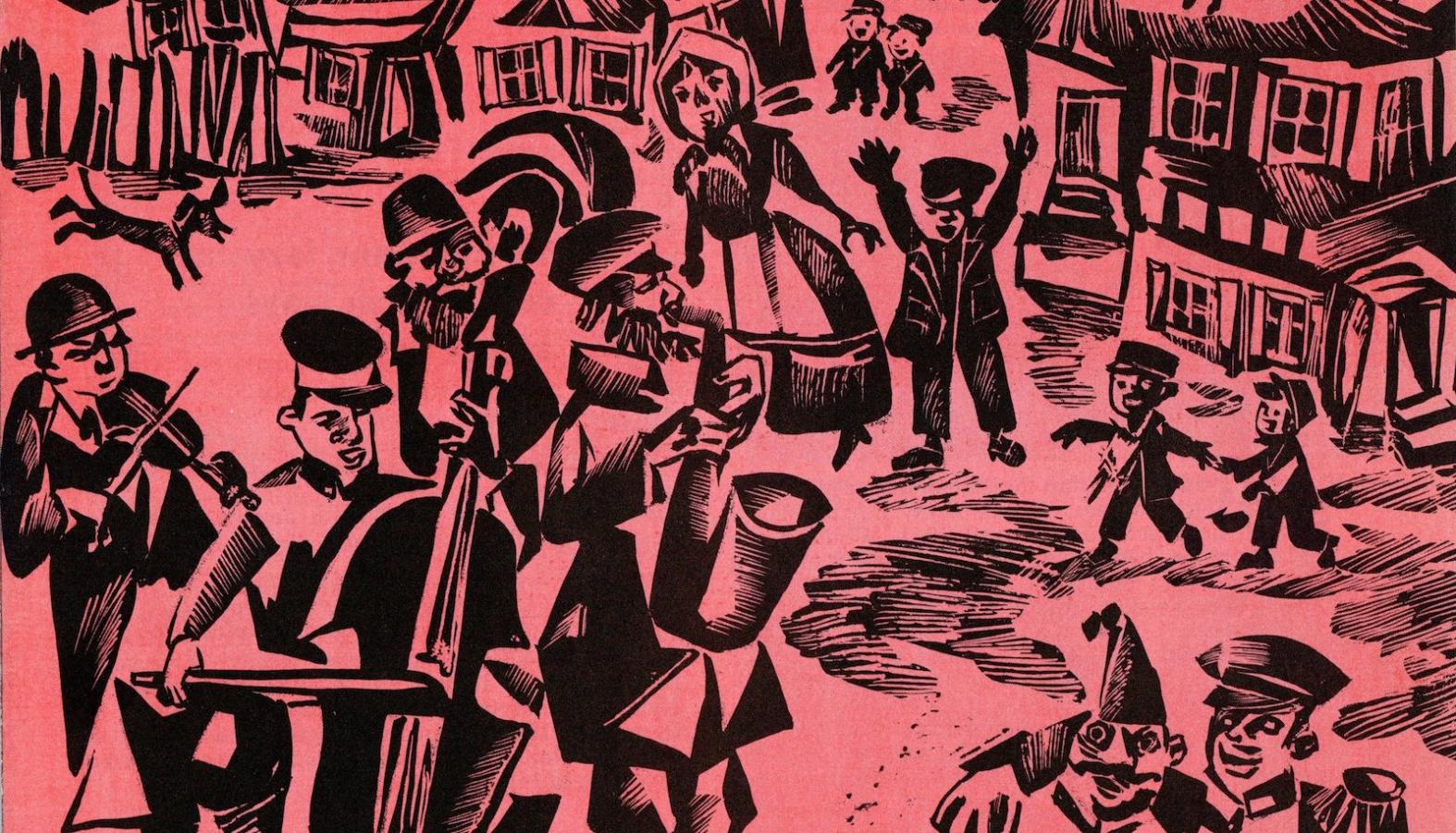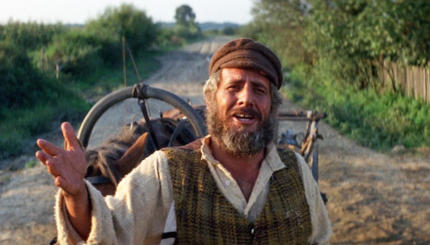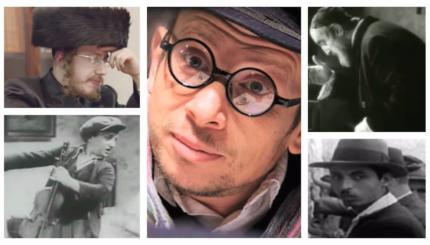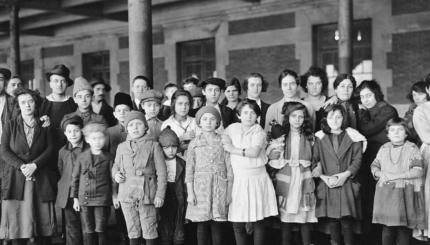Virtually every Jew today has a mental image of the , the small villages in which Jews lived for centuries in Eastern Europe. These images are informed by the portrayal of shtetl life in a variety of media, from fiction to film.
Sholem Aleichem‘s Tevye the Dairyman (which most of us know better as Fiddler on the Roof) and artist Marc Chagall‘s whimsical depictions of Ukrainian Jewish life (with images of floating fiddlers) contribute to the contemporary vision of the shtetl as a small Jewish town in in Eastern Europe where a population of poor but industrious Jews worked and studied, all the while seemingly accompanied by a klezmer soundtrack.
It doesn’t take a professional historian to realize that such a static representation of the populous and geographically disperse Jewish communities of eastern Europe doesn’t reflect historical reality. The popular “fiddlers” image of shtetl life neglects the great diversity of ideas and experiences that characterized these communities. This article examines the shtetl as a historical phenomenon.
What Exactly Was a Shtetl?
The word “shtetl” is Yiddish, and it means “little town.” Shtetls were small market towns in Russia and Poland that shared a unique socio-cultural community pattern during the 19th and early 20th centuries.
Shtetls ranged in size from several hundred to several thousand residents. Forests and fields often surrounded these small towns. Gentiles tended to live outside of the town, while Jews lived in the town proper. The streets were, for the most part, unpaved, the houses constructed of wood. Public spaces included synagogues (often wooden), the beit midrash (study house), shtiblekh (smaller, residential houses of prayer), a Jewish cemetery, Christian churches (Russian Orthodox or Roman Catholic, depending on the location), bathhouses, and, of course, the marketplace.

Help us keep Jewish knowledge accessible to millions of people around the world.
Your donation to My Jewish Learning fuels endless journeys of Jewish discovery. With your help, My Jewish Learning can continue to provide nonstop opportunities for learning, connection and growth.
The Jewish community was typically governed by a community council, a kahal. The kahal oversaw civil and religious affairs, from collecting taxes to dispensing charity. While religion guided daily life, it was not, as is often portrayed, the sole occupation of Jewish males. In reality, the scholarly class was a small, elite segment of society. A majority of shtetl Jews, both men and women, worked to support their families, usually in commercial or artisanal trades, and then, more commonly, as time and industrialization marched on, in factories.
Modernization, migration, emigration, and revolution contributed to the decline of the shtetl. The Holocaust destroyed any remaining vestiges of shtetl life.
Shtetls Were Separate and Distinct
Thousands of shtetls existed in Eastern Europe at the turn of the 20th century, and while many of Jewish communities shared a similar organizational structure, they were not all the same. Politics, dialect, and religious customs varied across Eastern Europe, as evidenced by what has come to be known as the “gefilte fish line.” This is an imaginary line that extends across Eastern Europe, dividing those Jews to the west who season their gefilte fish, a traditional Sabbath dish, with sugar from those to the east who season the fish with pepper.
This culinary equator highlights the fact that each shtetl had its own history and traditions, inspired by the local milieu. Each shtetl had its own recipes, stories, legends, and klezmer tunes. Even Judaism varied. Hasidism thrived in scores of shtetls, with many communities simultaneously supporting several distinct groups of Hasidim. Where there were Hasidim, there were likely Mitnagdim, the opponents of Hasidism, who practiced traditional historical Judaism. From different flavors of gefilte fish to different flavors of Judaism, the small market towns of Eastern Europe supported their own identities.
Not an All-Jewish Saga
Non-Jews often made up the majority of a shtetl’s population. Scholar Gennady Estraikh explains, “It’s a distorted picture of the shtetl which completely excludes its non-Jewish residents or reduces them to extras (e.g. the Shabes goyim, Gentile helpers for the Sabbath chores) in an all-Jewish saga.” In reality shtetls were characterized by daily contact between Jews and Gentiles.
Jewish-Gentile relations ranged from peaceful to explosive. Shtetl memories, however, tend to focus on the pogroms–anti-Jewish riots–to the exclusion of more harmonious daily interactions. Without question, pogroms were promulgated by Gentiles and devastated Jewish communities, but these incidents of anti-Jewish violence do not tell the whole tale of Jewish-Christian relations in the shtetl. Shtetls were market towns, and, as such, their residents, Jewish and Gentile, merchant and farmer, buyer and seller, conducted daily business transactions and maintained social contacts as well.
Shtetl Memories
Why does the shtetl loom so large in contemporary Jewish consciousness? For American Jews, a majority of whom are of Ashkenazic (Eastern European) descent, the shtetl serves as a mythical point of origin. This simple, down-to-earth culture–guided by what seems to contemporary observers a colorful combination of religion and folk wisdom–is where we came from. And while shtetl life was inexorably changed by industrialization and modernization, it was destroyed by the Holocaust. Thus, shtetl life is sanctified with an aura of martyrdom.
In Jewish history and Jewish memory, shtetls pulsed with Yiddishkeit (Jewishness). Rabbis and rebbes and Yiddish and klezmer and perhaps even an occasional flying fiddler characterized these small market towns, but they were also defined by much more than these stereotypical images.
On a micro level, each shtetl had a unique local history. On a the macro level, societal changes — including the economic upheaval caused by industrialization and demographic change, and the ideological upheaval wrought by socialism and Zionism — made life in the shtetl a dynamic experience. A more nuanced vision of shtetl life makes it easier to appreciate why so many Jews left the place we now view with such nostalgia even before that centuries-old way of life was ended by the Holocaust.



